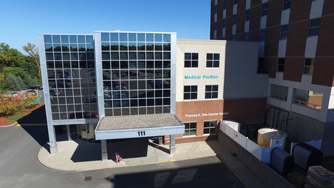
Surgical oncology refers to the practice of surgery to diagnose and treat cancer. Surgeons of almost every specialty are involved in cancer care. You will likely see a surgeon initially to make the diagnosis. Your surgeon will meet with you, review your medical history, and evaluate your overall health status prior to making any recommendations for your treatment. He or she will discuss with you your specific wishes, needs and special circumstances and together, with you, develop a treatment plan that is best for you.
The first step will be proper diagnosis. A biopsy of a sampling of the tumor will be done so that the cells can be viewed under a microscope to determine the type of cancer and some of its features. There will be several ways this can be done:
Fine needle aspirate (FNA): A tiny needle is placed into the tumor and used to pull out a few cells or some liquid with some cells for evaluation.
Core needle biopsy (core biopsy): A needle is inserted into the tumor and a small core or tube of the tumor is removed. Unlike an FNA the cells are removed as a small ‘block’ allowing more cells to be viewed and also allowing evaluation of how the cells are arranged or structured together.
Incisional biopsy: A minor surgical procedure that involves removal of part of an area or lump suspected of having cancer. The tissue is then evaluated under the microscope.
Excisional biopsy: A surgical procedure, usually minor, that removes the entire suspicious area or lump. For certain medical situations this may be the best approach.
Microscopic analysis (pathology): Tissue that is removed is specially treated and viewed under a microscope by a specialized physician (pathologist). The pathologist will diagnose and categorize the tumor or cancer.
Once your cancer has been diagnosed (that is the type of cancer determined), you will then undergo an evaluation to determine the size of the cancer and if there is any evidence that it has spread to nearby tissues or through the blood stream to other organs. This will be accomplished with physical examination, blood tests and imaging studies like X-rays, CAT scans and MRI scans.
The role of the surgery can then be established. The best course of action may be to remove the cancer. By removing cancer cells, surgery can cure cancer, keep the cancer from spreading, relieve symptoms or prolong survival. Some cancers are more successfully treated with surgery if removing them can be done safely and without removing or damaging vital organs. Chemotherapy and radiation therapy are often used before surgery to shrink the cancer and make the operation safer and more effective.
By combining chemotherapy and radiation with surgery, cancer cells that may have spread away from where the cancer began can be prevented from recurring. This multimodality approach has been researched in many cancers and proven to be a safer yet more effective way to treat and cure cancer.
At the Broadway Campus we have many skilled surgeons who are experienced in the diagnosis and treatment of cancer. Your surgeon will be a part of your team of doctors, nurses and support staff that will help guide you through your treatment and be there to address all of your questions and needs.
HealthAlliance Hospital
105 Mary's Avenue
Kingston, NY 12401
Phone: 845.338.2500
Get Directions »
Thomas A. Dee Cancer Center
111 Mary's Avenue
Kingston, NY 12401
Phone: 845.334.3015
Get Directions »